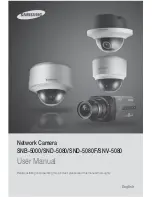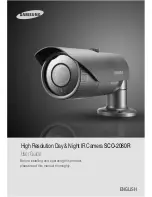
Instructions, AutroFlame X33AF, 116-P-X33AF/IGB, rev . E, 2013-08-13, P/N 95-8625-17 .1, Rev: 2/13
Autronica Fire and Security AS
Page 6
PROTECTION AGAINST MOISTURE DAMAGE
It is important to take proper precautions during installation
to ensure that moisture will not come in contact with the
electrical connections or components of the system . The
integrity of the system regarding moisture protection must
be maintained for proper operation and is the responsibility
of the installer .
If conduit is used, we recommend installing drains,
according to local codes, at water collection points to
automatically drain accumulated moisture .
It is also recommended to install at least one breather,
according to local codes, at upper locations to provide
ventilation and allow water vapor to escape .
Conduit raceways should be inclined so that water will
flow to low points for drainage and will not collect inside
enclosures or on conduit seals . If this is not possible, install
conduit drains above the seals to prevent the collection
of water or install a drain loop below the detector with a
conduit drain at the lowest point of the loop .
Conduit seals are not required for compliance with
explosion-proof installation requirements, but are highly
recommended to prevent water ingress in outdoor
applications . Units with M25 threads must use an IP66/
IP67 washer to prevent water ingress .
WIRING PROCEDURE
Wire Size and Type
The system should be wired according to local codes .
The wire size selected should be based on the number
of detectors connected, the supply voltage and the cable
length . Typically 16 AWG or 2,5 mm
2
shielded cable is
recommended . Wires should be stripped 3/8 inch (9 mm) .
A minimum input voltage of 18 Vdc must be present at the
X33AF .
NOTE
Re fe r to “ Powe r C o n s u m p t i o n” i n t h e
“Specifications” section of this manual.
The use of shielded cable is required to protect against
interference caused by EMI and RFI . When using cables
with shields, terminate the shields as shown in Figures 7
through 12, and Figure 15 . Consult the factory if not using
shielded cable .
In applications where the wiring cable is installed in
conduit, the conduit must not be used for wiring to other
electrical equipment .
If disconnection of power is required, separate disconnect
capability must be provided .
CAUTION
Installation of the detector and wiring should be
performed only by qualified personnel.
Detector Mounting
Install the mounting arm assembly on a rigid surface .
The ideal installation surface should be free of vibration
and suitable to receive 3/8 inch (M9) bolts with a length
of at least 1 inch (25 mm) . The surface must also have
sufficient capacity to hold the detector and mounting
arm weights (See "Specifications" section) . Refer to the
Q9033 Mounting Arm and Collar Attachment Manual (95-
8686) for additional mounting information . See Figure 3
for dimensions .
13.1
(33.4)
10.6
(27.0)
4.0
(10.2)
4.0
(10.2)
3.0
(7.6)
3.0
(7.6)
4X ø0.42
(1.1)
E2069
NOTE: THIS ILLUSTRATION SHOWS THE
DETECTOR MOUNTED AT THE 10° MINIMUM.
THESE DIMENSIONS WILL CHANGE BASED
ON THE DETECTOR’S MOUNTING ANGLE.
Figure 3—Q9033 Mounting Bracket Dimensions in Inches (cm)
(See Figure 1 for Correct Detector Orientation .)











































